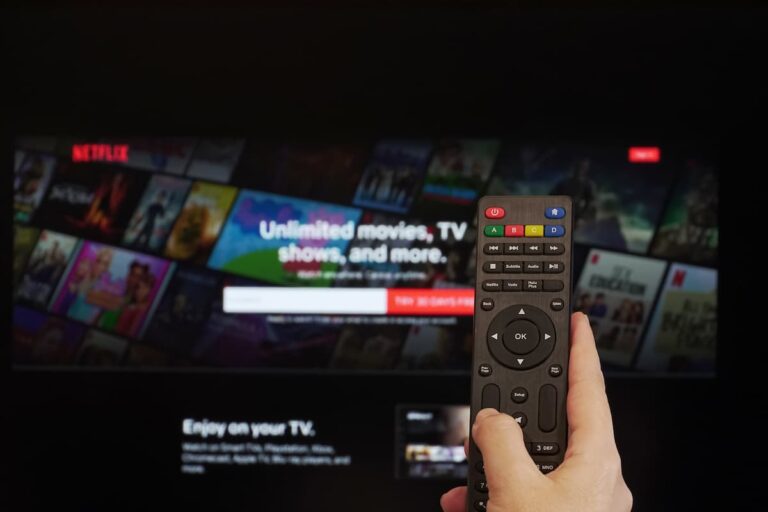We’ve all heard of people talking about old money vs new money. Even if you’re not fortunate enough to be in either of those categories, you’re probably at least broadly aware of what they are.
But what is the difference between old money and new money entrepreneurs, really? And, perhaps more importantly, should you even care?
We’ll look into exactly that, including what’s classified as old money and is new money an insult – even today
What is old money vs new money?
It’s worth considering the main differences between old money and new money (as well as it even matters for your purposes).
But before doing that, let’s take a quick look at what is old money and new money.
What’s classified as old money?
Old money tends to refer to the wealth held by families who have maintained this over several generations. In those countries that have an aristocracy, it generally includes them but in other countries, like the US, it can refer to families that built their wealth hundreds of years ago.
This means that who exactly is “old money” can differ from place to place. For example, the Rothschild family managed the largest fortune in the world during the 19th century – the equivalent today to several hundreds of billions of dollars.
But even at that point, the Rothschilds weren’t considered old money in Britain. Instead, the term there and in other European countries mainly refers to the aristocracy and nobility who own large amounts of land
What is new money?
The term new money refers to wealth that has been acquired more recently, usually based on it being earned instead of inherited. It generally includes those who are self-made, but it can also refer to anyone who inherited wealth from someone who earned this in the last few generations, rather than hundreds of years ago.
This means that it doesn’t exclusively include those who’ve managed to get rich from nothing, although those who’ve built their billions from the ground up certainly belong in this category.
Some people will refer to this as the nouveau riche, which is simply the French term for “new money”.
Either way, it’s rarely used in a positive way even if, these days, the vast majority of the wealthiest people in the world would fall into this category.
Old money vs new money: What’s the difference?
Where the money comes from
The main difference between old money and new money is where it came from.
As outlined above, old money generally refers to wealth that’s been passed through the generations of a particular family. While there is no set amount of time needed for money to be considered “old”, it’s generally at least over 100 years ago if you’re in the US – and even longer if you’re in Europe, for example.

On the other hand, new money is classed as being “new” because it was only earned more recently. In most cases, it refers to those who are basically entirely self-made, like if they built a successful company. This means that while they didn’t necessarily become rich overnight, it’s not the centuries that old money families are usually talking about.
The impact of this is that the main distinction between old money vs new money is always going to be its source.
How the money is managed (supposedly)
This is a slightly controversial one, but hear me out.
Old money is passed through the generations because it’s been managed well. You’ll often hear of old money families having complicated trusts and similar things in place as a way to make sure that the money is protected and will last.
It’s rare for old money to be invested in anything close to being considered high risk. Instead, you’ll find most wealth from old money families tied up in things like property, well-established companies and pieces such as expensive art work.
On the other hand, it’s much more common to hear of new money being held in the flashy new investment of the day. Just ask any tech billionaire who holds Bitcoins – Elon Musk, looking at you.

That said, this doesn’t necessarily mean that new money is always mismanaged. But the reason old money is, well, old is because it’s been conservatively managed over the years. With new money, it remains to be seen whether that’s the case.
Just consider all of the people you’ve heard of having blown through their fortunes, like celebrities and athletes, many of whom blame terrible spending habits for this.
There’s also the saying: “Shirtsleeves to shirtsleeves in three generations”. This refers to the fact that most wealthy families tend to lose their wealth in only three generations – and it’s mainly the blame of mismanagement.
Maybe that old money management does have some benefits to it after all.
How they are each perceived
This point on the different types of money is arguably less important these days, but it’s definitely worth mentioning.
That is, there are still those who use the term “new money” as an insult, with the implication that having old money is classy and having new money is trashy. These are often the same people who use the terms rich vs wealthy in a negative way.

You can even see it just when you Google each term. Searching for old money pulls up images of people at country clubs smoking cigars or driving Rolls Royces in front of massive estates.
New money, on the other hand, produces pictures of flashy red cars or people with diamond encrusted glasses on a yacht.
(Which doesn’t sound too bad, now that you mention it.)
You’d be hard pressed to find someone these days who actually cares about this, but it’s true that there’s still a lingering perception of old money somehow being “better” than new money.
The amounts of each that remain today
We go into this in more detail below but one of the big differences in old money vs new money is how much of each is in circulation today – and you may be surprised at the result.
Just look at the list of the richest people in the world. The vast majority of them are either self-made or had families that came into money relatively recently, meaning they wouldn’t be considered old money.
This study also backs that up, finding that 67.7% of the world’s wealthiest people (i.e. those that have a net worth of $30 million or more) were self-made, with 23.7% of them having a mix of inherited and self-created wealth. At the same time, only 8.5% of these individuals had completely inherited their wealth.
And while there’s no way of dividing these lists into old money and new money, you can see pretty easily just how much wealth is today considered new money based on the people on this list. It’s not an exact science, but it shows that, in total, there is far more new money in the world today.
You may also be interested in: Million vs Billion: The Actual Difference Will Blow Your Mind
Where it’s located
One of the big distinctions between the two ideas can be seen in old money vs new money statistics, especially those that show where each of them tend to be located.
That is, as this research found, only 28.9% of billionaires in the US inherited their wealth with 30.2% of the world’s billionaires being based in the US. The rest built their fortunes as follows:
- 32.1% are company founders
- 26.8% got theirs from the financial sector
- 8.4% are owners and executives of companies
- 3.8% built their wealth based on political connections
In Europe, on the other hand, just over half of European billionaires inherited their wealth, with an overall number of 28.4% of the world’s billionaires.
While simple inheritance isn’t enough to consider someone as being from old money, as you also have to make sure that the wealth has been in their family for “enough” generations, this is a pretty clear indication that more old money can be found in Europe compared to the US.
Who is in each category
The kinds of people you’ll find in the old money category aren’t that diverse, both from a racial perspective as well as in terms of what they do now.
For starters, perhaps unsurprisingly, they’re basically all white. You’ll also mostly find them to be business owners in charge of managing the family trusts and various businesses.

That’s not necessarily always the case. For example, Anderson Cooper is from the Vanderbilt family and Lydia Hearst, the great-granddaughter of William Randolph Hearst, is a model. However, these tend to be exceptions to the rule.
New money, on the other hand, can be basically anyone. It’s true that they are also predominantly white (and male), but there are more exceptions to this than in the old money category.
For instance, there are a ton of entrepreneurs, particularly in the tech space. You’ll also find sportspeople and celebrities, many of whom have branched out into various business ventures to really explode their wealth.
What’s the difference between old money and new money entrepreneurs?
The difference between old money and new money entrepreneurs is how they earned their wealth. In the case of the latter, they generally built this up themselves through founding or further building major companies. On the other hand, the former inherited this from previous generations, including often inheriting companies that they continue to manage.
One major difference between old money vs new money entrepreneurs is their level of wealth – and probably not in the way you think.
For instance, the ten wealthiest individuals in the world are listed here with almost all of them being tech entrepreneurs, meaning they’d very clearly be considered “new money”. Even the two of them who inherited wealth (Bernaud Arnault and Mukesh Ambani) wouldn’t be considered “old money” as while their respective families were definitely rich, this wealth doesn’t go back far enough to meet that “standard”.
So you could say that it’s actually the new money elite who hold more wealth, at least at the upper end of the wealth chain. That is, while there are definitely still wealthy families out there that have maintained this wealth over generations, there is a massive amount of self-made fortunes these days.
(And I’m pretty sure that Jeff Bezos isn’t crying himself to sleep each night at not being considered as coming from old money.)
Does old money still exist?
While old money still exists, the families that retain this wealth are no longer among the very wealthiest individuals in the world. That said, many of them still hold significant amounts of assets and for those families where inheritances have not been divided up as much as others, their wealth does still continue to grow.
For instance, when it comes to lists of families that have old money in the US, the Rockefellers always rank highly, with John D. Rockefeller being considered the wealthiest American of all time.
Today, the family has an estimated net worth of $8.4 billion – definitely not bad, but also far from the levels they were previously at.

The Vanderbilts also feature prominently on any list of old money in the US, although this wealth has been diluted somewhat as it passed down the generations. For example, as mentioned earlier, Anderson Cooper is from the Vanderbilt family and while he’s certainly not struggling, he’s also not a billionaire.
That said, the largest privately held home in the US, Biltmore, is still held by the Vanderbilt family so there is definitely a significant amount of old money still in the family.
There are also a number of families in Europe who are clear proof of the fact that old money still exists. The Duke of Westminster, for example, inherited the title when he was 25 in 2016 and is worth a cool £10 billion.
Similarly, the family of the Duke of Devonshire can be traced back to the 14th century, with the current Duke’s net worth estimated to be £870 million. While that may not put him at the very top of the Forbes rich list, especially in the question of old money vs new money, no one could really argue that it’s a terrible position to be in.
How does old money stay rich?
Old money families stay rich through a combination of investments and trusts that are passed down through the generations. These are combined with the sharing of strong financial management principles, with an expectation that younger generations will continue to manage the family’s wealth in a way that ensures it can sustain itself going forward.
That is, if you’re rich and you want your children and their children to stay rich (which you should, given it’s been shown that money buys happiness), you’d hopefully put some serious time into teaching them how to continue to attract money. You’d also make sure that the assets in which your money is held are pretty certain to continue to grow in value, which is why something like property is often a preferred option for many of these families.
Of course, there have been times when this hasn’t happened and where a family’s wealth has basically disappeared after having been maintained for literally centuries. This is why you hear stories of British aristocrats owning massive houses that they then have to open up to the public to pay for.
This article has some great examples of how some of the richest families in the US lost all their wealth in only a few years.
Is new money an insult?
The term “new money” can be used as an insult to describe those who have earned their money themselves or in a very recent generation, rather than having inherited it over several generations within the family. Sometimes also referred to as “nouveau riche”, the term is almost always used in a derogatory fashion.
That said, you’d have to be a certain type of person to really care about the distinction between old money vs new money.

As mentioned earlier, the richest people in the world today are basically all what we would consider “new money”. And when you have tens of billions of dollars built from that world famous website or hugely popular operating system, who would really consider it a bad thing that you earned all that money yourself rather than inheriting it?
To be clear, there are valid reasons to question a system that allows people to earn tens of billions of dollars, including why these people aren’t paying more tax – for example. But the fact it’s not inherited shouldn’t even be a blip on your radar.
How many generations is considered old money?
There is no hard and fast rule of how many generations need to pass before wealth is considered old money. Instead, it can be better to look at some of the other characteristics that define old money before determining which category a family’s wealth falls into.
That said, it’s often going to be country-specific. For example, in the US, the Rockefellers and Vanderbilts built their wealth in the late 19th century and so are considered old money.
In the UK, however, this wouldn’t even come close to being considered old money. Instead, it’s much more dependent there on titles or those who own large amounts of land that have been passed down the generations. In many cases, this land was acquired several hundred years ago, making sure they’re really putting the “old” into old money on that side of the pond.
Who is an example of new money?
Any tech billionaire would be considered as being an example of new money. While those who have made their money in tech are among the richest people in the world, as they are self-made rather than having inherited their wealth, they are classed as being new money rather than old money.
It’s worth highlighting again though that when it comes to the distinction of old money vs new money, this exact example shows that you shouldn’t automatically assume that those with old money are richer.
Instead, the vast majority of people on the Forbes list of the richest people in the world are new money, having either completely built up their eight- or nine-figures of wealth themselves or, in a few cases, having inherited this from a relatively recent generation.
This also shows that while it may have previously been fashionable to insult someone by referring to them as being “from new money”, that insult really doesn’t land any more when you’re talking about a billionaire many times over.
New money vs old money: does it even matter?
So after all that, we’re down to the crux of the matter: does the difference between new money and old money even matter?
To the vast majority of us: absolutely not. After all, who really cares how anyone built their wealth at the end of the day?
There is one great takeaway from this distinction though and that’s looking at how those who are old money maintained their wealth. Mostly, it comes down to:
- Consistently managing their money well
- Adopting positive spending habits
- Learning (and teaching younger generations) about financial management
These are all points that those of us at a more normal level of wealth can certainly adopt as tips for the day. While it may not be at the same scale as the billionaires discussed in this article, at the end of the day, the concepts are the same.
I’ve talked a lot on this site about how money management and spending within your means are critical to ensuring that you can build the future that you want and reach financial freedom. And similarly, learning about how this all works is also incredibly important to making that happen.
The point of teaching your kids about money isn’t talked about as much – but it should be. After all, this is the only way that new money is able to survive down the generations. And it’s for the same reason that you should make sure your own kids have the best financial foundation possible.
This doesn’t mean giving them a whole chunk of money to get them started – you don’t even have to give them anything for this to work. Instead, it means doing what you can to make sure they understand how managing money works so that they too start making smart financial decisions as early as possible. In doing this, you and your future generations will be well on the path to a secure financial future.





